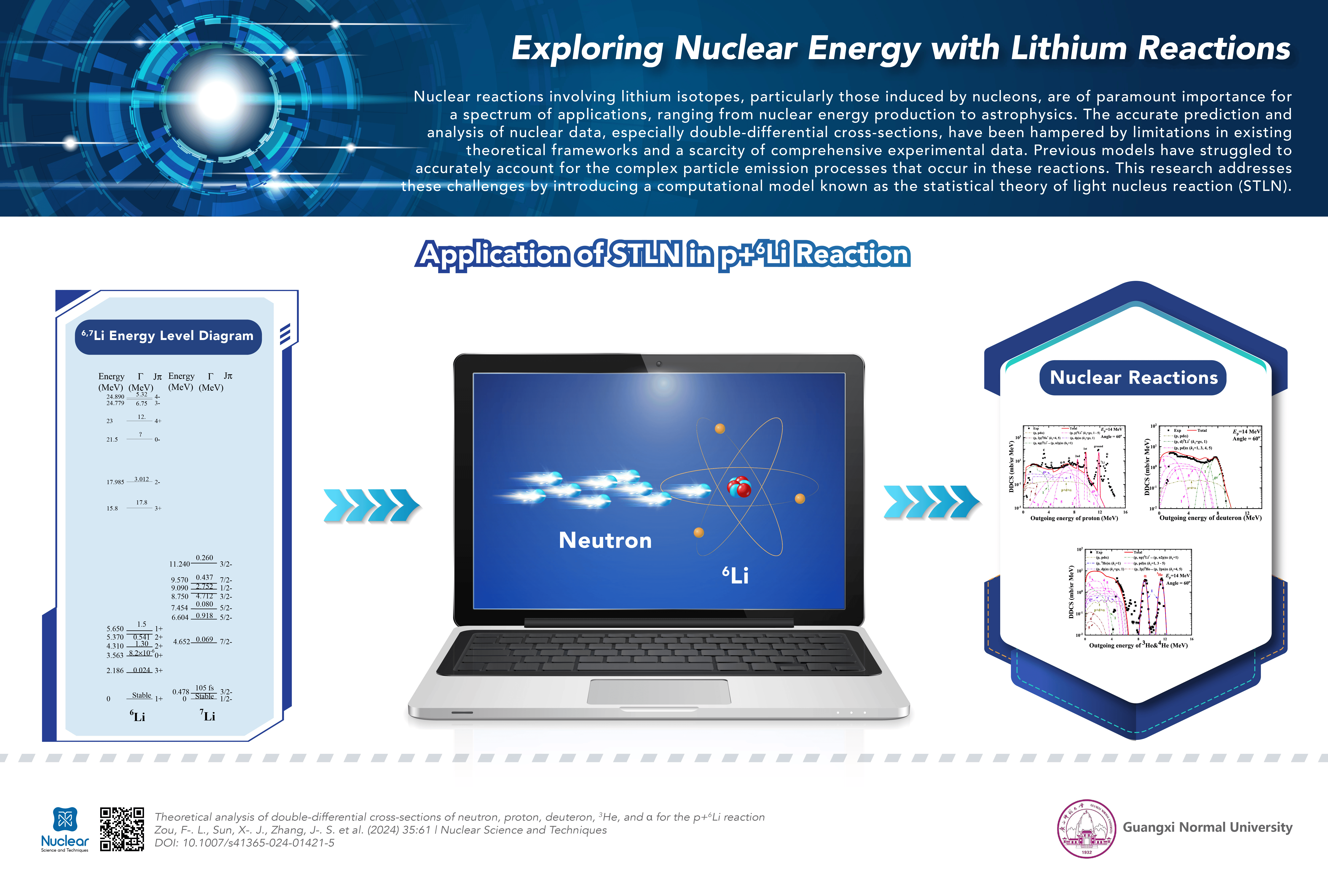Article title: Theoretical analysis of double-differential cross-sections of neutron, proton, deuteron, 3He, and α for the p+6Li reaction
DOI: 10.1007/s41365-024-01421-5
One sentence summary:
This research introduces a statistical theory to predict nuclear reactions in lithium isotopes accurately, offering significant advancements in nuclear physics that promise enhanced energy solutions.
Keywords:
Statistical theory of light nucleus reaction, p+6Li reaction, Light composite charged particle, Double-differential cross-sections, Two-body breakup, Three-body breakup
The Novelty (What)
This research introduces a statistical theory of light nucleus reaction (STLN) for calculating double-differential cross-sections of outgoing neutrons and light charged particles in the p+6Li reaction. Utilizing the unified Hauser–Feshbach and exciton models, it showcases a significant advancement in scientists’ ability to describe particle emission processes accurately, including energy, angular momentum, and parity conservations. The study successfully demonstrates the difference in reaction dynamics between p+6Li and p+7Li, identifying pre-equilibrium emission as the dominant reaction mechanism and revealing the impact of contamination on the accuracy of nuclear data. With the development of the PLUNF code for generating ENDF-6 formatted data, this work opens new avenues for nuclear physics research, promising enhanced predictive capabilities and refined nuclear databases for future scientific and technological advancements.
The Background (Why)
Nuclear reactions involving lithium isotopes, particularly those induced by nucleons, are of paramount importance for a spectrum of applications, ranging from nuclear energy production to astrophysics. Despite the crucial role these reactions play, the accurate prediction and analysis of nuclear data, especially double-differential cross-sections, have been hampered by limitations in existing theoretical frameworks and a scarcity of comprehensive experimental data. Previous models have struggled to accurately account for the complex particle emission processes that occur in these reactions, leading to gaps in our understanding and inaccuracies in nuclear databases. This research addresses these challenges by introducing a computational model known as the statistical theory of light nucleus reaction (STLN). The approach is designed to overcome the shortcomings of previous studies by providing a more precise calculation of double-differential cross-sections for outgoing neutrons and light charged particles in the p+6Li reaction. This theory not only fills a significant gap in nuclear physics research but also offers a sophisticated solution to the longstanding issue of accurately modeling nuclear reactions.
The SDG impact (Big Why)
Statistics reveal a pressing global challenge: energy consumption is projected to grow by nearly 50% by 2050, according to the U.S. Energy Information Administration. The escalating demand underscores the urgent need for innovative solutions in energy production that are both sustainable and efficient. This research on the statistical theory of light nucleus reaction (STLN) for p+6Li reactions directly contributes to Sustainable Development Goal 7 (Affordable and Clean Energy) by paving the way for advancements in nuclear energy technologies. Furthermore, the implications of this research extend to Sustainable Development Goal 13 (Climate Action), as it provides a foundation for the development of energy solutions that can mitigate the impact of climate change.
Graphical Abstract



